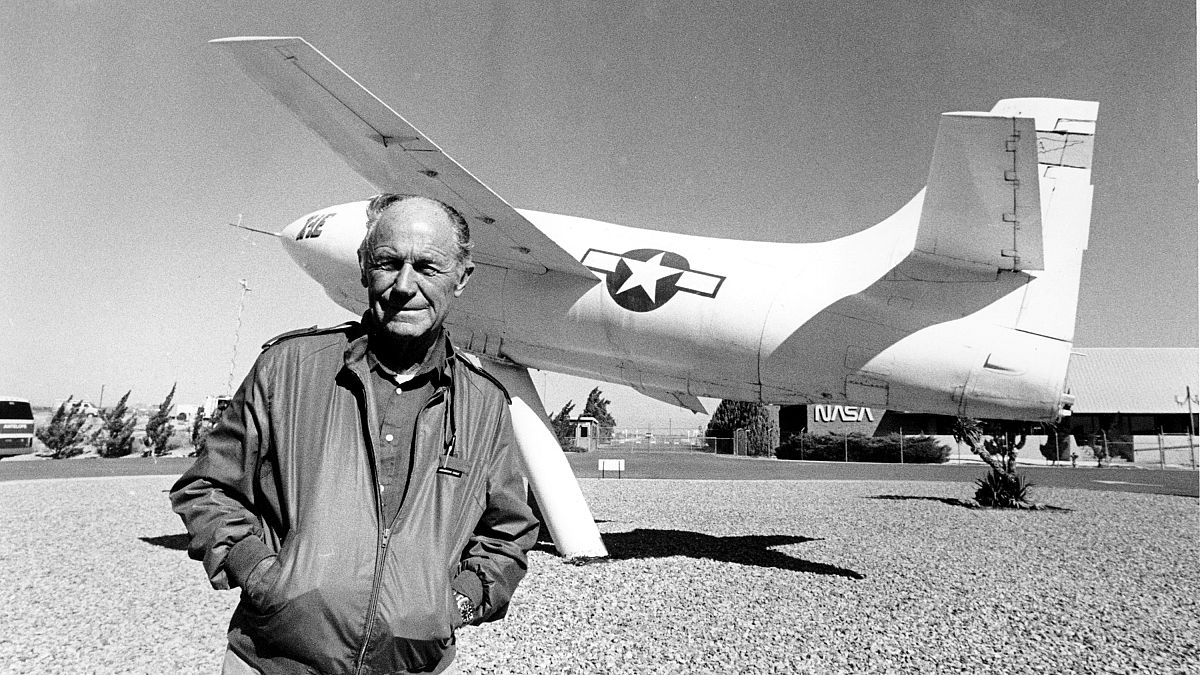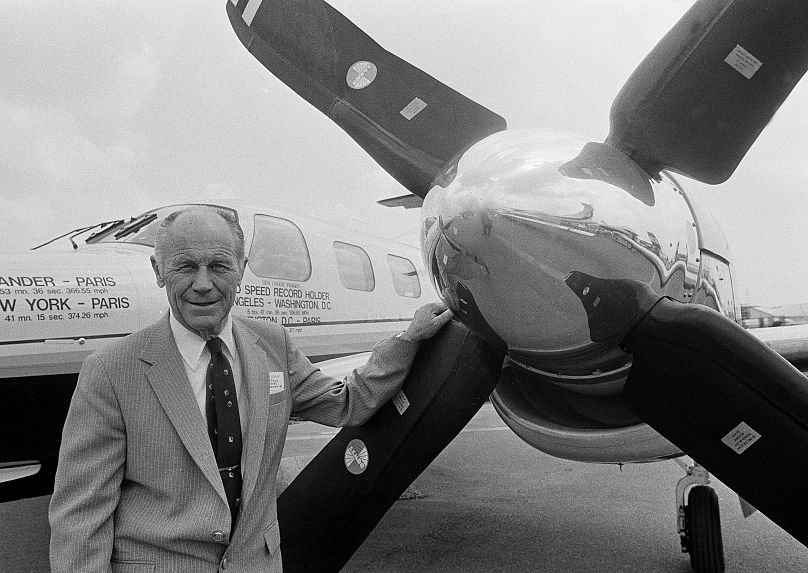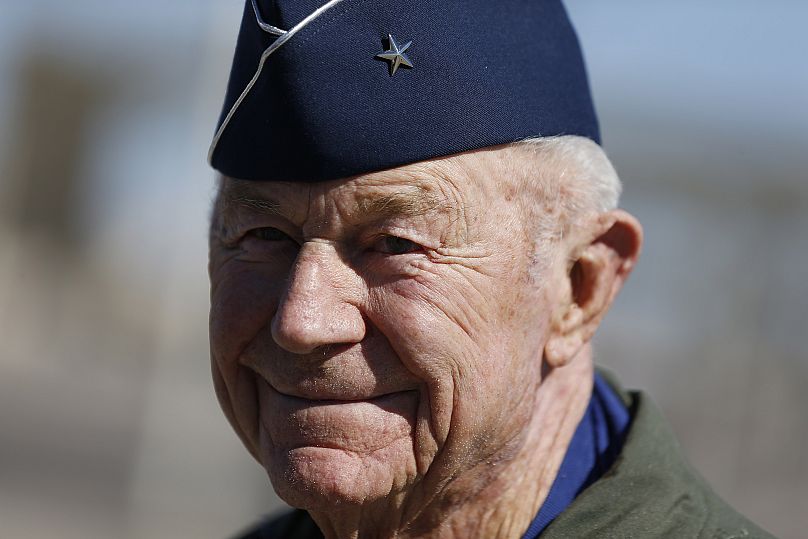The first man to fly a plane faster than the speed of sound, Charles “Chuck” Yeagar, has died aged 97.
The first man to fly a plane faster than the speed of sound, Charles “Chuck” Yeagar, has died aged 97.
A retired Brigadier General in the US Air Force, the West Virginia-born pilot flew for more than 60 years, including piloting an X-15 fighter jet to nearly 1,000 mph in 2002 at the age of 79.
He was recognised for his service in the second world war, where he is credited with shooting down 13 German planes on 64 missions, including five on a single mission.
His crowning achievement however came two years after the end of the war with Nazi Germany, when in 1947 he flew Bell X-1 rocket plane faster than 660mph, making him the first pilot to break the sound barrier.
His supersonic feat was achieved at the age of 24.
“Sure, I was apprehensive,” he said in 1968. “When you’re fooling around with something you don’t know much about, there has to be apprehension. But you don’t let that affect your job.”
He said in 1947 he could have gone even faster had the plane carried more fuel. The ride, he said, “was nice, just like riding fast in a car.”
Yeager nicknamed the rocket plane, and all his other aircraft, “Glamorous Glennis” for his wife, who died in 1990.
Yeager’s feat was kept top secret for about a year when the world thought the British had broken the sound barrier first.
“It wasn’t a matter of not having airplanes that would fly at speeds like this. It was a matter of keeping them from falling apart,” Yeager said.
A record breaking life
Yeager enlisted in the Army Air Corps after graduating from high school in 1941. He later regretted that his lack of a college education prevented him from becoming an astronaut.
He started off as an aircraft mechanic and, despite becoming severely airsick during his first airplane ride, signed up for a program that allowed enlisted men to become pilots.
During the war he was shot down over German-held France but escaped with the help of French partisans.
After World War II, he became a test pilot beginning at Wright-Patterson Air Force Base in Dayton, Ohio.
Among the flights he made after breaking the sound barrier was one on in 1953, when he flew an X-1A to a record of more than 1,600 mph. He said he had awoken at dawn that day and went hunting, bagging a goose before his flight. That night, he said, his family ate the goose for dinner.
He returned to combat during the Vietnam War, flying several missions a month in twin-engine B-57 Canberras making bombing and strafing runs over South Vietnam.
Yeager also commanded Air Force fighter squadrons and wings, and the Aerospace Research Pilot School for military astronauts.
He died on Monday, NASA Administrator Jim Bridenstine said in a statement, calling the death "a tremendous loss to our nation."
“Gen. Yeager’s pioneering and innovative spirit advanced America’s abilities in the sky and set our nation’s dreams soaring into the jet age and the space age. He said, ‘You don’t concentrate on risks. You concentrate on results. No risk is too great to prevent the necessary job from getting done,'” Bridenstine said in his statement.
“In an age of media-made heroes, he is the real deal,” Edwards Air Force Base historian Jim Young said in August 2006 at the unveiling of a bronze statue of Yeager.
He was “the most righteous of all those with the right stuff,” said Maj. Gen. Curtis Bedke, commander of the Air Force Flight Test Centre at Edwards.
His exploits were told in Tom Wolfe’s book “The Right Stuff,” and the 1983 film it inspired.


